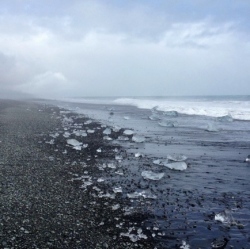
Carbon sequestration may not be the panacea that some had hoped. A study, partially funded by the US Department of Energy, has found that far less carbon dioxide than the prediction of 90 percent may be turned into rock when sequestered. This means much might eventually escape back into the atmosphere.
Carbon sequestration is one of many possible ways to tackle climate change. Though typically sequestered in rock, other approaches such as using special polymers and even processes inspired by the sea urchin are being investigated, but geological sequestration is still the mainstay. The University of Illinois recently celebrated reaching its goal of capturing and storing one million tons of carbon dioxide underground, but the process may not be as rock solid as thought. "If it (CO2) turns into rock, it’s stable and will remain there permanently," says Yossi Cohen, a postdoc working on the study. "However, if it stays in its gaseous or liquid phase, it remains mobile and it can possibly return back to the atmosphere."
The findings almost contradict the central tenet of how the process works, which sounds charmingly elegant and simple. CO2 from coal fired power plants is collected (tricky in itself) and injected into rock at 7,000 feet below ground level then stored in large pockets of brine, or deep-saline aquifers, where it reacts with the liquid and turns from gas to solid. However the scientists found in their modelling of the process that very little gas may actually become solid. Though it does solidify, it only does so at the interface where the CO2 enters the brine pool. It then reacts to build a "wall" the rest of the gas cannot get through.
